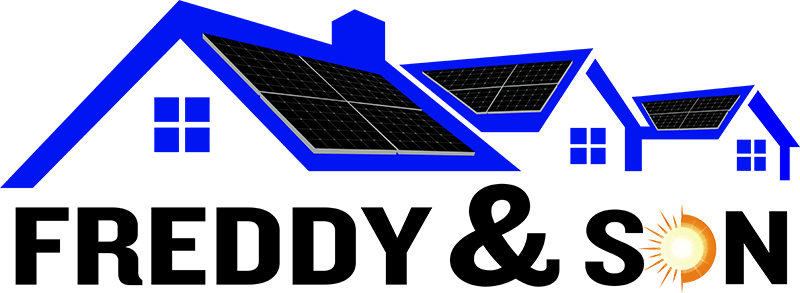
Overlapping metal roofing panels correctly is essential to the integrity and longevity of a metal roof. Metal roofing is favored for its durability, resistance to the elements, and energy efficiency, but its benefits can only be fully realized through proper installation. The overlapping panels involve careful measurement to ensure that each panel adequately covers its neighbor, creating a watertight barrier that prevents water ingress. Let’s explore how to overlap metal roofing.

The specific instructions for overlapping can vary depending on the type of metal roofing panels being used. Common types, such as Pro-Rib or corrugated metal panels, have their unique overlap specifications that must be followed. Installers must adhere to these guidelines and any additional requirements put forth by their local construction authority. Additionally, safety precautions are paramount when working at height with metal materials to prevent accidents and ensure a secure installation.
Understanding How to Overlap Metal Roofing?
In installing metal roofing, the proper overlapping of panels is essential for ensuring a watertight and durable roof. Overlap refers to the amount by which roofing panels cover one another to prevent water infiltration.
Minimum Overlap for Metal Roofing
For low-slope roofs, the minimum overlap should typically be between three to four inches (7.6 to 10.2 cm). This dimension allows for adequate coverage to channel water effectively off the roof, reducing the risk of leaks. It is important to consult the specific manufacturer’s guidelines and adhere to local building codes to confirm the exact measurements for a particular installation.
Metal Roof Overlap Length
The overlap length plays a crucial role in waterproofing and providing weather resistance. Here’s what to consider:
- Low-Slope Roofs: Overlap should be generous to facilitate watersheds.
- High-Slope Roofs: A standard overlap is usually sufficient due to the increased gravity flow of water.
- Seam Types: Overlapping techniques may vary depending on the style of the metal roofing—standing seam roofs may have a different overlap requirement than corrugated panels.
For successful implementation:
- Always use butyl tape sealant between overlaps for enhanced sealing.
- Secure the panels by fastening screws at the prescribed intervals based on the panel type and local weather conditions.
Adhering to the correct overlap measurements and installation techniques is pivotal in establishing a metal roof that stands the test of time and the elements.
Methods of Overlapping Metal Roofing

Ensuring proper overlapping is critical for durability and water resistance in metal roofing installations. Specific techniques are applied depending on the direction of the overlap—horizontally, vertically, or lengthwise.
Overlapping Metal Roofing Horizontally
Horizontal overlapping is common when installing metal roofing on sheds or similar structures. The standard practice involves overlapping the panels by one rib, translating to about 9 to 12 inches of overlap. It’s crucial to align the panels precisely, leaving no room for gaps through which water can penetrate.
- Correctly place fasteners at the overlap: Place screws at the peak of the ridges for the best seal.
Overlapping Metal Roofing Vertically
Vertical overlapping requires attention to the side laps of the roofing panels. Each metal panel typically has a designed overlap edge and an underlap edge. When installing:
- The underlap edge of the new panel should slide underneath the overlap edge of the installed panel.
- Ensure a minimum of 3 to 4 inches overlap for effective water resistance.
Overlapping Metal Roofing Lengthwise
Lengthwise or end-to-end overlapping should be minimal since panels are generally custom-cut to length. However, if an overlap is necessary, such as in structures with exceptionally long roofs:
- Maintain a 2-inch overlap and use a butyl tape sealant between layers for a waterproof bond.
- Overlap panels in the prevailing wind direction to reduce wind uplift under the seams.
Installation Techniques

The precision of the overlap and securing technique in metal roofing ensures a durable and weatherproof installation. The success of a metal roof installation hinges on these crucial details.
Roof Panel Overlap
The correct overlap of metal roofing panels is essential for creating an impermeable barrier against the elements. Panels should overlap by at least one rib width, often about 3 inches, to allow for adequate coverage. The specifics, however, can vary based on the panel design and manufacturer’s recommendations. One must:
- Align the Panels: Start with the bottom edge of the roof and ensure each panel is flush and straight before overlapping.
- Measure the Overlap: Use a tape measure to overlap each panel by the specified amount consistently.
Attaching Metal Roofing
Attaching metal roofing securely involves the strategic placement and use of fasteners. To provide stability, these fasteners must penetrate the roof’s underlying structure, typically wood sheathing. Here’s how:
- Screw Placement: Fasten screws at the peak of the metal corrugation or rib to mitigate water penetration. Screws should be self-tapping and made for metal roofing applications.
- Sealant Application: Apply a metal roofing-approved sealant along the overlap, if recommended, before placing the next panel to enhance the watertight seal.
- Tighten Evenly: Do not over-tighten. Screws should be snug against the metal washer, ensuring a secure yet not deformed fit.
Freddy & Son – Your Trusted Commercial Roofing Contractors in Virginia
Freddy and Son is the best commercial metal roofing contractor in Virginia, distinguished by unmatched expertise and a steadfast commitment to excellence. Our team of highly trained metal roof installers excels in the latest techniques, delivering dependable, long-lasting, and cost-effective solutions for businesses spanning Virginia, Maryland, Washington D.C., and Pennsylvania.
Whether it’s new installations, replacements, scheduled maintenance, or emergency repairs, Freddy and Son prioritize the durability and protection of commercial buildings.
Emphasizing environmental friendliness, energy efficiency, and enduring value, Freddy and Son stand as a reliable partner, providing peace of mind through comprehensive Labor and Manufacturer Warranties. Trust Freddy and Son for expert roofing repairs that enhance your property’s safety and operational efficiency.



